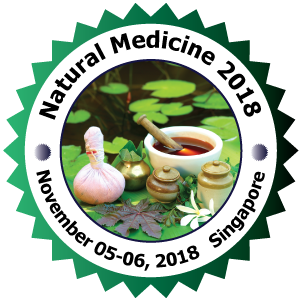
Imran Hasan Syed
Sultan Qaboos University, Oman
Title: Phytochemical and Pharmacological Investigation on Medicinal Plants of Different Origin
Biography
Biography: Imran Hasan Syed
Abstract
Natural products have always been the source of treatment against many different illnesses and deseaeses. Many pharmacologically active compounds were either directly isolated from the plants or are structurally modified natural products. In virtue of the importance of medicinal plants we carried out investigations on three different medicinal plants Psidium guajava, Pergularia tomentosa and Ziziphus spina Christina.
Psidium guajava (Myrtaceae) has been folkloricaly used against various human diseases. Traditionally leaves are used in digestive disorderness, and considered to be spasmolytic, bark of the plant is used as an astringent, flowers are used to treat bronchitis whereas, fruits are laxative and good against bleeding gum. In view of the medicinal properties of Psidium guajava, leaves of Psidium guajava was collected from Karachi, Pakistan and phytochemical investigation were carried out on alcoholic extract. These studies results in isolation of several new and known triterpenoids. Structure of these compounds were determined by extensive spectroscopic techniques. Pharmacological studies showed that the triterpenoid Asiatic acid has dose dependent (10–500 mg/ml) spasmolytic activity. The ethanolic extract showed significant spasmolytic, antioxidant and antibacterial activities.
Pergularia tomentosa L. (Apocynaceae) is a perennial twining herb with much milky latex which grows in semi-arid zones of the Sahel and Arabian Peninsula where preparations from its root and shoot are used to treat skin diseases and other ailments. It is often classified as a toxic plant that causes spasm and gastroenteritis. P. tomentosa showed antitumor, molluscicidal, and hypoglycemic properties. Different cardenolides, taraxasterol-type triterpenes, and alkaloids have been isolated from the root and leaf which are responsible for the cytotoxic, antitumor, and antimicrobial properties. The studies on the ethyl acetate extract of this plant yielded ursane and lupane type of triterpenoids. The extract also inhibited Pseudomonas aeruginosa, Staphylococcus aureus, and Escherichia coli at 250 mg/mL.
Ziziphus (Rhamaceae) is another genus which is traditionally used against various human ailments. The root barks of Ziziphus nummularia have sedative-hypnotic, antipyretic and analgesic properties. In Saudi Arabian folk medicine, the leaves of Ziziphus spina christi (jujube) are used to heal wounds, treat skin diseases, some inflammatory conditions, sores, against ringworm, fever, gonorrhea, sex diseases and ulcers. The bark and fresh fruits decoctions are used as a body wash, to promote the healing of fresh wounds and also used to cure dysentery, bronchitis, cough and tuberculosis. The bark of the Ziziphus spina christi was collected from Al-Ha’il, Saudi Arabia, and its ethyl acetate extract showed prominent antimicrobial activity and cytotoxicity.

